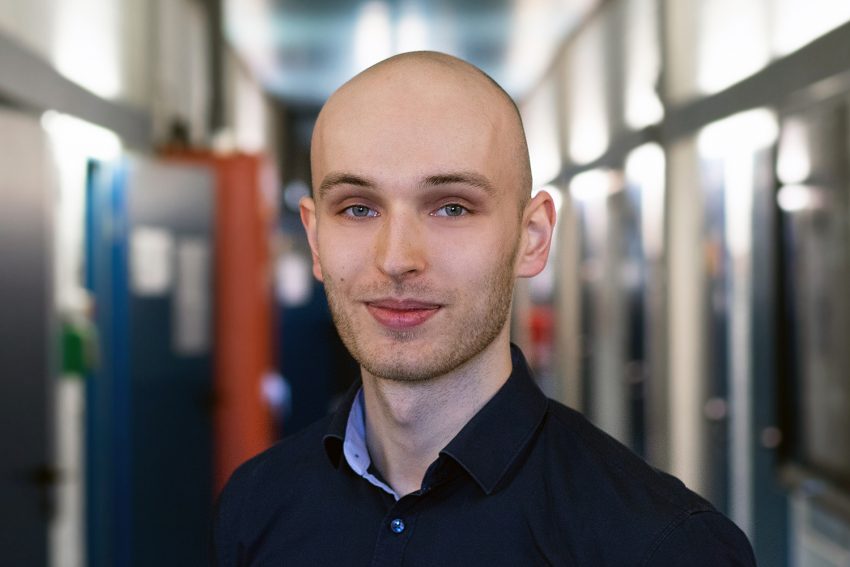Active Ingredient Against Parasites in the Eye Short portrait of Tomas Rimkus from the doctoral program "Drug Discovery and Cheminformatics for New Anti-Infectives"
Amoebae are unicellular parasites that do not have a solid body shape. They form plasma appendages to move around and thus constantly change their shape. So does the genus of acanthamoebae. They can cause severe inflammation of the cornea of our eyes. Because they often change their shape and are very robust, there is a constant need for new active substances to combat the pathogens. This is what doctoral student Tomas Rimkus is researching in the PhD program “Drug Discovery and Cheminformatics for New Anti-Infectives”. In this short portrait, he tells us more about his research and how he plans to produce an infection model in the lab.

PhD student Tomas Rimkus researches a new active ingredient against acanthamoebae. Picture credit: Max Fuhrmann/TU Braunschweig
Who are you and what are you researching?
My name is Tomas Rimkus. I am a pharmacist, doing my doctorate at the Department of Pharmaceutics at the Technische Universität Braunschweig, and I am researching new active ingredients for the treatment of acanthamoebic keratitis. This is a rare, infectious eye disease caused by certain parasites, the acanthamoebae. These can cause severe inflammation of the cornea. Untreated, but also sometimes despite treatment, this disease can lead to loss of vision.
What specific question are you investigating?
Specifically, the topic of my work is “Polycationic oligomers as lead structures for new anti-infectives for the treatment of acanthamoebic keratitis”. I am addressing a broad class of substances – polycationic oligomers. I try to identify and characterize certain compounds from this substance class with respect to their efficacy against the acanthamoebae and to optimize promising candidates in their structure.
Besides the efficacy on the one hand, it is of course important that these compounds are as non-toxic as possible towards the host cells, so that a gentle but at the same time effective treatment option can be developed.
I will also be working on an in vitro infection model of acanthamoeba keratitis. “In vitro” means “in a test tube.” This means that I am trying to artificially recreate the affected tissue – i.e. the infected cornea – in the laboratory on the basis of human cells as well as acanthamoebae. The corresponding drug candidates are then to be tested on this model. My goal is to use such a model to research the efficacy of the substances in the organism, while at the same time avoiding animal testing.
What excites you about your research?
What excites me most is the interplay between several disciplines in pharmacy, especially pharmaceutical technology and biopharmacy, pharmaceutical biology, and medicinal chemistry. This makes the work very versatile and offers the chance to learn many methods from the corresponding disciplines. I’m also excited by the idea of artificial tissues and the prospect of being able to reduce animal testing as a result.
What relevance does the topic have for drug research?
On the one hand, it would be nice to find a new, effective and at the same time gentle treatment for acanthamoebic keratitis or to lay the foundation for it in the form of lead structures. On the other hand, in vitro organ models are a promising approach to make the preclinical phase of drug development more ethical as well as less costly, although establishing such methods will probably take some time.
What is special about being involved in the PhD program “Drug Discovery and Cheminformatics for Novel Antiinfectives (iCA)”?
The fact that people from many different scientific backgrounds work (together) here, and through the exchange you can gain an insight into the perspective of scientists from other disciplines. This also makes you even more aware of how complex and multifaceted the process of drug development actually is. The opportunity to sit in on other workgroups further emphasizes this aspect.
